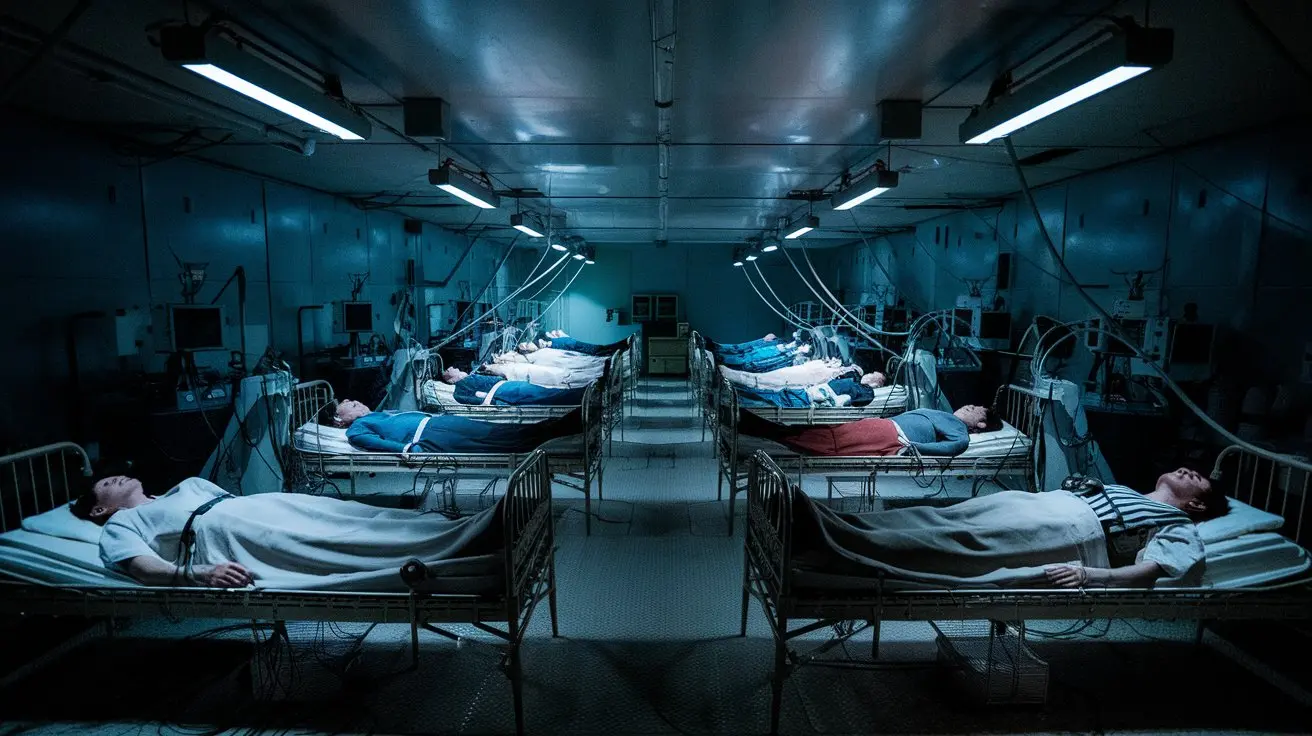In the mid-1960s, nestled deep within a covert U.S. military research facility, a peculiar study began: “The American Sleep Experiment.” Its purpose was simple: to unlock the mysteries of sleep and find out if humans could go without it. The world was already embroiled in a Cold War, and rumors circulated that the Soviets had found ways to enhance their soldiers’ endurance by reducing sleep. The U.S. wanted to see if they could push further — eliminating the need for sleep altogether.
Dr. Jonathan Reeves, a brilliant but eccentric neuroscientist, was put in charge. His team gathered six volunteers, each promised a handsome reward for their participation. The task? To stay awake for 30 consecutive days in a sealed observation room. The subjects were provided with enough food, water, and entertainment to keep them comfortable, but they were deprived of one thing: the ability to sleep.
Initially, everything seemed fine. The subjects adapted surprisingly well, feeling a mild rush of energy, fueled by adrenaline. They played board games, read books, and even engaged in lively debates. But after five days, things started to change. Their faces grew pale, their eyes bloodshot, and their reactions slower. Day by day, their mental stability started to unravel.
By the tenth day, strange hallucinations began to occur. Some saw shadowy figures lurking in the corners of the room, whispering their names, while others claimed they could hear distant, unearthly music. Reeves and his team were captivated by the changes. They recorded everything, believing they were on the verge of a groundbreaking discovery.
But the 15th day brought chaos.
One of the volunteers, a soft-spoken woman named Sarah, snapped. She screamed at the top of her lungs, clawing at the walls, convinced that something was trying to pull her into the darkness. The team rushed in, sedating her. The others, though disturbed by her outburst, seemed oddly indifferent, their emotions dulled.
As the days continued, the subjects became more detached. They stopped speaking to each other, their faces expressionless, like ghosts drifting through a maze of their own minds. Their eyes, though open, seemed hollow, as if they had lost the ability to connect with reality.
On the 25th day, disaster struck. The team lost contact with the volunteers after hearing strange static through the microphones. When Reeves and his colleagues rushed to the observation room, they were met with a scene of horror. The room was dark, the lights flickering erratically. The volunteers sat silently in the center, eyes wide open but not seeing, breathing but barely alive.
Desperate, Reeves tried to communicate with them, but there was no response. He approached one of the men and touched his shoulder. In a split second, the man lashed out, grabbing Reeves’ arm with an unnatural strength. His voice, barely a whisper, echoed through the room: “We don’t need to sleep anymore… we’ve seen what’s beyond.”
Panic spread among the research team. What had they uncovered? The experiment, which had once seemed a harmless investigation into human endurance, had unlocked something far darker—something that should have remained hidden.
The volunteers were sedated and transported to an unknown location for further study. The project was quietly shut down, buried deep in the classified archives. Dr. Reeves disappeared shortly after, and some say he became obsessed with the idea of sleeplessness, convinced that the human mind could exist in two worlds simultaneously: one conscious, one beyond.
To this day, rumors of “The American Sleep Experiment” persist, but the truth remains elusive. Was it a simple experiment gone wrong, or did they truly uncover something unimaginable lurking in the depths of sleep-deprived minds?
No one knows for sure. But if you find yourself unable to sleep one night, staring at the shadows in your room… remember the whispers of those who have seen beyond.
